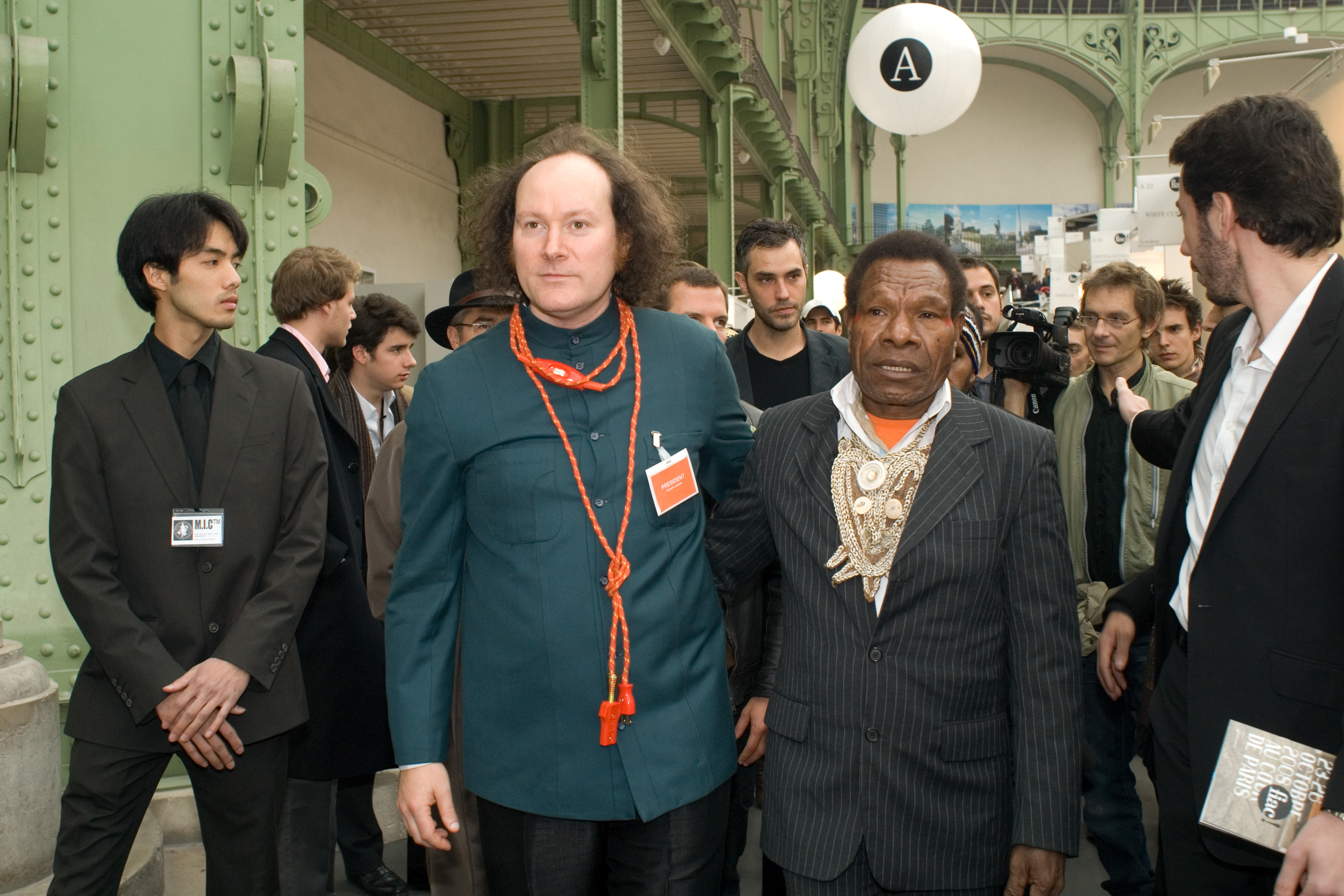The collective performance "Aréopage Ouest-Lumière", carried out within the framework of the Fiac, at the Grand-Palais (Paris), on Saturday October 25, 2008, had for object to gather around a common invitation of the painters of Papua New Guinea and, especially, to make them consider by all (institutional, gallery owners, visitors) as inescapable personalities and worthy of the greatest honours. This objective could not have been reached without an important logistical work, essential to the good progress of the performance. Who were we at the threshold of the Fiac, walking alone to the entrance in the hope of finding a VIP pass to enter the enclosure? We were others, alone, physically isolated, anonymous. What happened in "Aréopage"? As soon as we were all gathered at the entrance of the VIP area of the Fiac, our collective body became a new entity, a generator of flow, of relationship. Under the Joule effect, by induction, our bodies ignite and ignite their environment. We are now important dignitaries, accompanied by their personal staff; fifteen security guards protect us (all belonging to a fictitious security company, MIC Corporation); a hundred or so shareholders with badges accompany us in procession, reporters and photographers draw the public's attention to us. We felt together an intense and carrying force throughout this intervention. Current, resistance, tension: these data circulated and made sense in the eyes of history. For not only were we honoring the Agatoaks on this occasion, but above all we were embodying a history that had been overturned. From being "animal" curiosities, at least wild ones, exhibited in cages, the Agatoak had indeed become recognized and respected dignitaries.

